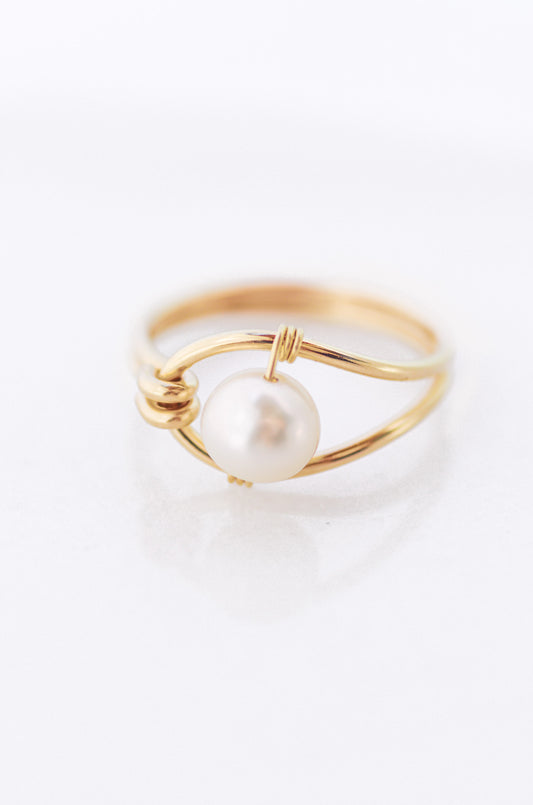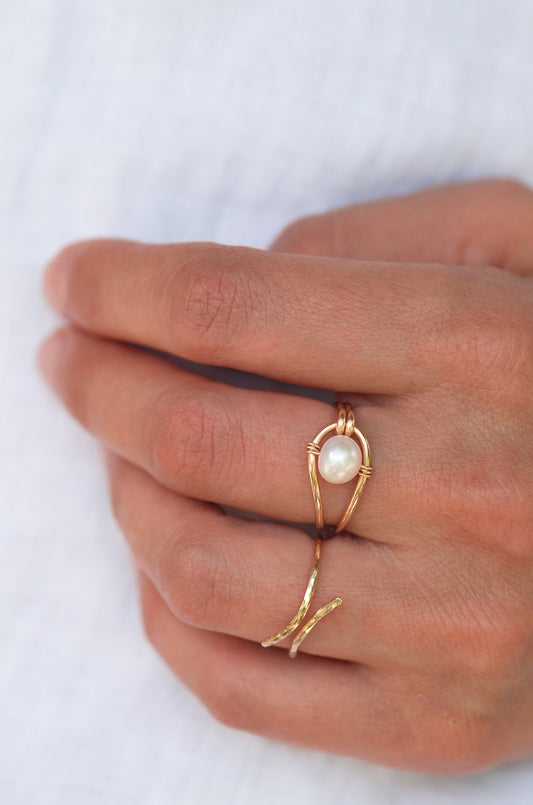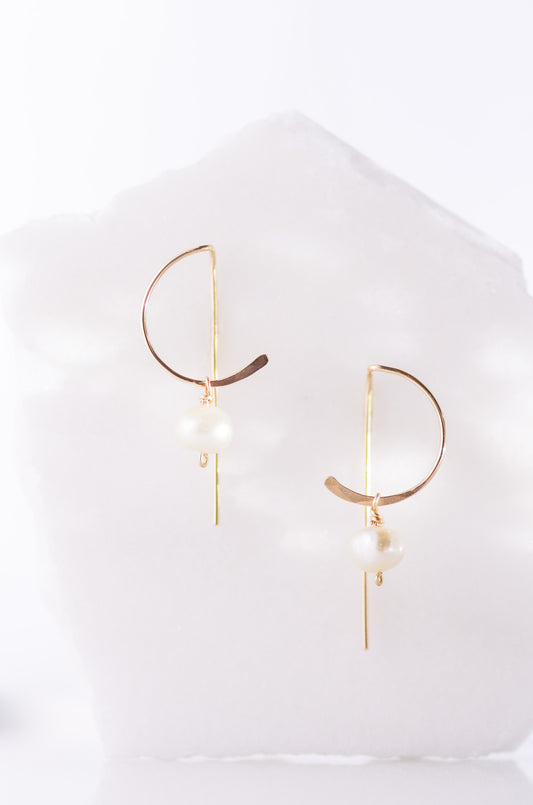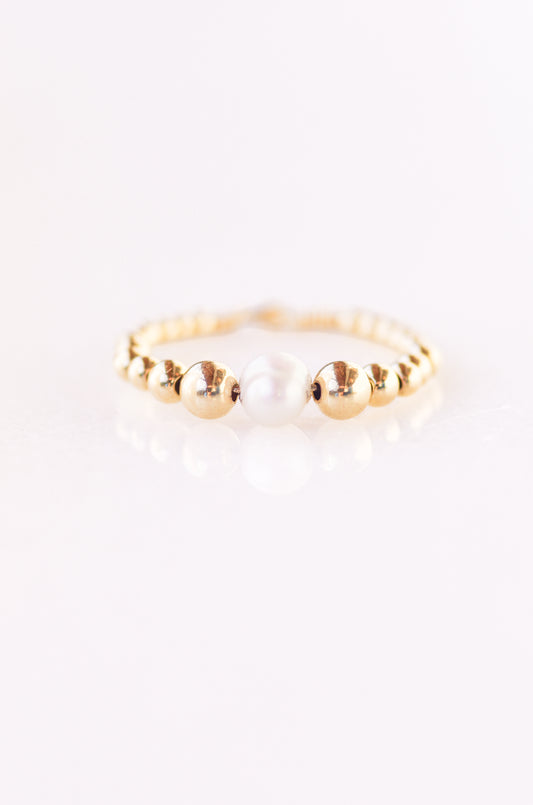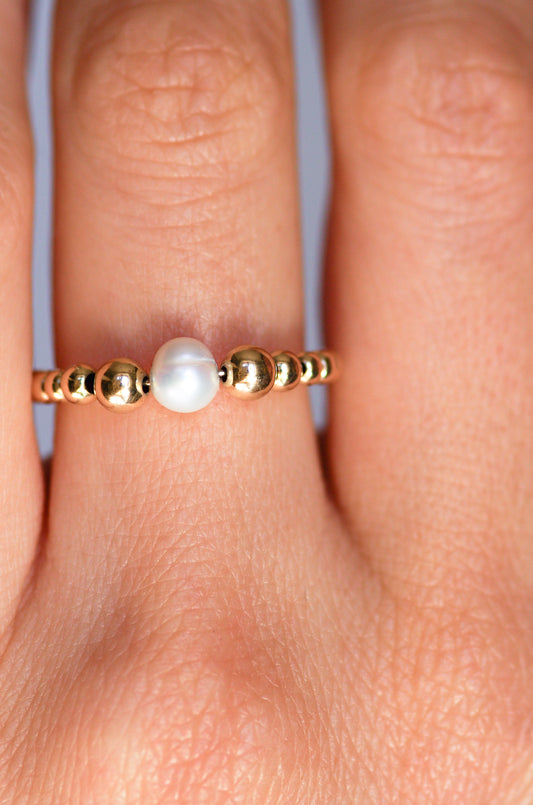Greenwashing in Jewelry: 7 Red Flags to Avoid
Share
Greenwashing is everywhere in the jewelry industry. Brands often use misleading claims to appear eco-conscious without making real changes. Here's how to spot the red flags:
- Vague Claims: Words like "eco-friendly" or "green" without specifics.
- Hidden Supply Chains: Lack of transparency about sourcing and production.
- Empty Buzzwords: Terms like "ethical stones" or "recycled metals" without proof.
- Fake Certifications: Unverified or self-made "badges."
- Cherry-Picking: Highlighting one "green" feature while ignoring bigger issues.
- No Proof: Claims without third-party verification.
- Future Promises: Big goals for later with no current action.
To avoid being misled, look for brands that provide clear, detailed, and verifiable information about their materials, processes, and impact. Transparency is key.
Red Flag 1: Vague Claims Without Evidence
Jewellery brands often throw around terms like "eco-friendly", "green", or "sustainable" without offering any real substance to back them up. These words sound appealing but lack clear definitions or legal standards, leaving consumers in the dark about their actual environmental impact [1][2][3]. Essentially, a company can label its products as "sustainable" without explaining what that really means or how their practices differ from conventional ones.
Take gold, for example. A brand might call their gold "sustainable" but fail to specify whether it’s sourced from small-scale artisanal operations or massive open-pit mines [2]. The difference is huge: artisanal mining might have a smaller environmental footprint, but even then, sustainability isn't just about the method of extraction. It also involves ensuring fair wages for miners, protecting ecosystems, and supporting local communities. Without this context, the word "sustainable" becomes meaningless.
Real sustainability claims are backed by details. Instead of vague statements like "eco-friendly materials", credible brands provide specifics. For instance, at Rays & Riches, we highlight that our gold-fill jewellery contains 100 times more gold than typical gold-plated pieces. We also describe how the gold layer is bonded using heat and pressure, avoiding harmful chemicals. On top of that, we prioritize repurposed vintage pearls and gemstones, reducing the need for new mining altogether.
The difference lies in transparency and accountability. Brands that genuinely care about sustainability go beyond buzzwords. They share concrete details about their sourcing, production, and environmental impact. This might include certifications, supply chain disclosures, or data that supports their claims.
When brands don’t provide this level of openness, their claims might be more about marketing than meaningful action. Without solid evidence, these terms can obscure unsustainable practices, creating a misleading image of environmental responsibility [3]. Always ask: What specific actions are behind these claims? If the answers are vague or absent, it’s a warning sign of potential greenwashing. Next, consider whether the brand openly shares its supply chain practices as another layer of evaluation.
Red Flag 2: Hidden Supply Chain Information
Beyond vague claims, hidden supply chains provide another clue when it comes to spotting greenwashing. When jewellery brands keep details about their supply chains under wraps, it often raises questions about what they might be hiding. Transparency isn’t just a bonus - it’s a cornerstone of ethical and sustainable practices. Brands that genuinely prioritize ethics and sustainability are eager to share where their materials come from, how they’re processed, and who is involved in crafting their products.
The issue with hidden supply chains goes beyond secrecy. Without clear sourcing information, consumers are left in the dark about the environmental and social consequences of their purchases. This lack of openness often conceals issues like exploitative labour conditions, mining practices that harm ecosystems, or the use of conflict materials.
Trustworthy brands make their supply chain details accessible and specific. They’ll provide information about the mines their metals come from, the sourcing of their gemstones, and the working conditions of those in their production chain. This level of transparency requires effort, something less ethical brands often avoid.
Take, for example, the difference between a brand that vaguely claims to use "ethically sourced materials" and one that outlines its entire process. Detailed supply chain information strengthens sustainability claims and empowers consumers to make informed choices. At Rays & Riches, we openly share that we use ethically sourced metals, including recycled options, and that our repurposed vintage pearls and gemstones reduce the environmental toll of new mining. We also highlight our chemical-free bonding process, which uses heat and pressure instead of harmful substances. These specifics reflect a true commitment, not just marketing fluff.
Hidden supply chains often signal cost-cutting at the expense of ethics. Brands that avoid disclosing their sourcing practices may be relying on the cheapest materials available, disregarding their environmental and social impact. This strategy allows them to maximize profits while using clever marketing to appear environmentally conscious.
The jewellery industry faces unique challenges in achieving supply chain transparency due to its complex web of miners, refiners, manufacturers, and distributors. However, this complexity doesn’t justify vague or incomplete claims. Modern tracking technologies make it easier than ever to provide clear and accurate sourcing information.
Be cautious with brands that dodge direct questions about sourcing. True transparency involves openly discussing both successes and areas for improvement. It also extends to manufacturing processes, where brands should explain their methods and material choices. For instance, at Rays & Riches, our gold-fill technique avoids traditional soldering, offering a more sustainable production method while reducing skin irritation. A lack of supply chain transparency often goes hand-in-hand with other greenwashing tactics, as brands that hide sourcing details frequently rely on vague environmental claims to distract consumers from their shortcomings.
Understanding where materials come from and how products are made is essential before diving into the misleading buzzwords often used in marketing. Transparency is the foundation that allows consumers to make choices aligned with their values.
Red Flag 3: Empty Buzzwords Without Proof
In the jewellery world, words like "eco-friendly", "sustainable", "recycled metals", and "ethical stones" are everywhere. They sound great, don’t they? But without solid proof, these terms are often just clever marketing aimed at winning over environmentally conscious buyers. The real challenge for shoppers is figuring out which brands are making genuine efforts and which are hiding behind empty promises.
Take phrases like "green jewellery" or "responsibly sourced." They give the impression that a brand is doing the right thing. But many companies throw these terms around without offering any supporting evidence - no certifications, no detailed explanations, nothing to back up their claims.
The brands that truly care about sustainability are transparent. They’ll explain how they use recycled metals or ethical stones, breaking it down with specifics - percentages, sourcing details, certifications. For instance, they might describe how they melt down old jewellery to create something new or how they repurpose industrial metal waste. If a brand isn’t sharing this level of detail, it’s a red flag.
At Rays & Riches, we don’t rely on empty buzzwords. When we say we use recycled metals, we mean it - and we explain exactly how. For example, our ethically sourced metals include recycled options as part of our mission to reduce environmental impact. We also use repurposed vintage pearls and gemstones, which avoids the need for new mining and harvesting. These aren’t just buzzwords; they’re tangible practices that reflect our commitment to the planet.
Our gold-fill process is another example of how we prioritize sustainability. Instead of using chemicals, we bond a layer of gold with heat and pressure. This method not only reduces environmental waste but also makes our jewellery safer for people with sensitive skin. By being specific, we let consumers see the real difference in our approach.
Beware of brands that throw together phrases like "sustainably crafted eco-conscious ethical luxury" without any evidence. Often, this is just greenwashing - a way to sound responsible without actually being so. Genuine sustainability requires effort, trade-offs, and investments, and brands that are truly committed are usually eager to explain their processes in detail.
Vague promises are another warning sign. If a company says it’s "working towards sustainability" but doesn’t share specific goals, deadlines, or progress updates, it’s likely stalling while sticking to unsustainable practices. Real environmental commitments come with measurable targets and regular progress reports.
When shopping, look for brands that define their terms and back them up with proof. This could mean certifications from third parties, detailed descriptions of their processes, supplier transparency, or measurable impact data. The more specific and verifiable the information, the more likely it is that the brand’s sustainability claims are real, not just marketing fluff.
Red Flag 4: Fake or Misleading Certifications
Certifications can be a great way to build trust, but let’s face it - not all certifications are equal. Some jewellery brands flaunt badges and certificates that look official but don’t actually back up their environmental or ethical claims. Worse yet, some even create their own "certifications" or team up with organisations that set the bar so low that these badges become nothing more than a paid stamp of approval.
Here’s the problem: misleading certifications give consumers a false sense of trust. Many people assume that an official-looking badge means a product is sustainable, but companies often exploit this assumption. They use certifications that sound credible but offer little to no real value when it comes to ethical or environmental standards.
One big issue is self-made certifications. Brands sometimes invent their own labels - things like "Eco-Certified" or "Green Standard Approved" - but without any independent oversight, these are just marketing ploys.
Another concern is certifications from organisations with weak standards. These might address small things, like packaging materials, while ignoring much bigger issues like mining practices or labour conditions. This selective focus can make a brand seem more sustainable than it actually is.
Industry-specific certifications can also be misleading if they fail to address the core issues of sustainability and ethics. This is why transparency is far more important than a wall of badges.
At Rays & Riches, we prioritise transparency over collecting certifications. Instead of relying on labels, we focus on sharing our actual practices. For instance, our gold-fill process uses heat and pressure instead of harmful chemicals, which reduces waste and makes our jewellery safer for sensitive skin. We also use repurposed vintage pearls and gemstones, avoiding the environmental toll of new mining.
What should you look for when evaluating certifications? Research the certifying bodies behind them. Trustworthy certifications come from independent, third-party organisations with clear standards and regular audits. Prioritise certifications that address critical areas like responsible mining, fair labour, or recycling processes. Broad, vague claims are often a red flag.
The most reliable brands don’t hide behind badges - they explain their practices in detail. They’ll tell you where their materials come from, how they’re processed, and what steps they take to reduce their environmental footprint. While they might have some legitimate certifications, they don’t use them as a substitute for transparency or real action.
Sustainability is a journey, not a badge. Brands truly committed to ethical and environmental practices are open about their processes. They share their challenges, their progress, and the measurable steps they’re taking to improve. Instead of being dazzled by a collection of badges, look for brands that back up their claims with real, verifiable efforts.
Red Flag 5: Cherry-Picking One Green Feature
Cherry-picking happens when a company highlights one eco-friendly initiative while glossing over broader, unsustainable practices. This approach can mislead consumers into believing the company is fully committed to sustainability, even when they’ve only tackled a small part of their overall environmental footprint.
For instance, a brand might proudly advertise that it uses recycled gold in some of its products. At first glance, this sounds like a step in the right direction. But dig a little deeper, and you might discover that other aspects of their operations - like sourcing materials or production processes - are far from sustainable. By focusing on a single green feature, companies can obscure larger, more pressing issues.
True sustainability isn’t about isolated efforts. It’s about addressing the entire picture - from where materials come from to how products are made, used, and eventually disposed of. This is especially relevant in industries like jewelry, where sustainability challenges are deeply interconnected.
Take packaging as another example. A company might switch to recycled cardboard boxes and loudly promote its "eco-friendly packaging." But if their production processes involve harmful chemicals or exploitative labor practices, that packaging change does little to balance out the harm caused elsewhere.
At Rays & Riches, we take a different approach. Instead of cherry-picking, we aim for a comprehensive commitment to sustainability. Our gold-fill process avoids chemical waste by using heat and pressure to bond layers, and we incorporate vintage pearls and gemstones to reduce the need for new mining. With carbon-neutral shipping and a focus on local, small-scale production, we ensure that every part of our operation works toward minimizing environmental and social impact.
To spot cherry-picking, watch for brands that focus on a single "green" feature while ignoring critical issues like manufacturing methods, labor conditions, or supply chain transparency. Real sustainability means being upfront about challenges, taking action across multiple areas, and avoiding empty promises about future improvements. A single impressive claim isn’t enough - true responsibility requires a well-rounded, transparent approach.
sbb-itb-2024ddf
Red Flag 6: No Proof or Third-Party Verification
When brands make bold claims about their environmental efforts but fail to provide solid evidence, it’s a clear sign of greenwashing. In the jewellery industry, proof comes in the form of third-party audits, recognised certifications, or detailed supply chain documentation that can be independently verified.
This issue is more common than you might think. A 2023 McKinsey report revealed that 60% of jewellery consumers in Europe and North America consider third-party certifications essential when assessing sustainability claims [6]. However, the Responsible Jewellery Council (RJC) found that only 15% of jewellery brands worldwide hold certifications from credible third-party organisations [7]. This gap underscores the importance of independent verification.
Third-party verification serves as an impartial check, ensuring that a brand’s practices align with established environmental or ethical standards. Without this, you’re left to rely solely on the company’s word - an open door for greenwashing. Certifications like Fairtrade Gold, Responsible Jewellery Council (RJC) certification, or B Corp certification provide tangible proof. These organisations audit aspects such as supply chains, labour practices, and environmental impact, offering a level of transparency that consumers can trust.
Take Pandora as an example. In February 2024, the company earned SCS Global Services certification for its recycled silver and gold, with full supply chain traceability and publicly accessible audit results. This move led to a 30% boost in sales among eco-conscious consumers [7]. Similarly, Brilliant Earth published a third-party audited sustainability report in June 2023, detailing their sourcing practices, carbon footprint, and ethical labour initiatives. This transparency not only earned them Responsible Jewellery Council certification but also increased consumer trust by 25% [6].
On the other hand, unverified claims can be deceptive. For instance, a brand might advertise "recycled gold", but only a small percentage of the metal could be recycled, or the recycling process itself might be harmful to the environment [4][5]. According to the Global Sustainable Investment Alliance, 40% of consumers are skeptical of sustainability claims that lack third-party verification [6].
At Rays & Riches, we take a different approach. While we don’t yet have third-party certifications, we prioritise transparency by clearly outlining our processes. For example, our gold-fill method uses heat and pressure instead of harmful chemicals. We also use ethically sourced and recycled metals, along with repurposed vintage pearls and gemstones. These are practices you can easily understand and verify [8].
When considering a brand, it’s wise to approach those without verifiable proof cautiously. Ask for documentation and prioritise companies that provide clear, evidence-backed claims. Without solid proof, it’s reasonable to question whether their promises are masking greenwashing. By focusing on verifiable practices, we can collectively push for greater transparency and accountability in the jewellery industry.
Red Flag 7: Future Promises Without Current Action
When brands talk up big sustainability goals for the future but fail to act now, it’s a clear sign of greenwashing. Claims like aiming to be "carbon neutral by 2030" or "100% sustainable by 2035" can sound impressive, but without concrete steps today, they’re often just a distraction. These promises can act as a smokescreen, drawing attention away from current practices that might not align with true sustainability. It’s the gap between lofty goals and actual action that separates real commitment from empty slogans.
Brands that are genuinely committed to sustainability back up their claims with measurable progress. Instead of relying on distant goals, they share real, verifiable data about what they’re doing right now. For instance, they might provide transparency around their supply chains, emissions, resource usage, waste management, or product lifecycle practices. These companies don’t just highlight their successes - they’re also upfront about their challenges and explain how they’re working to address them [9][10][11].
True sustainability also means taking a comprehensive approach. Companies that are serious about their environmental impact support eco-friendly legislation, hold themselves and others accountable, and consider every aspect of their operations - from supply chains and packaging to energy consumption [10][11].
To identify brands that walk the talk, look for clear evidence of their efforts. Third-party audits and certifications are a great starting point. Reputable labels like B Corp, Fairtrade, Responsible Jewellery Council (RJC), or ISO 14001 provide standards that are backed by audits and transparency [9][11]. When reviewing a jewellery brand’s claims, check if they share detailed information about their supply chain and emissions on their website. Verified certifications add credibility and show that their commitments are more than just words [9][11].
At Rays & Riches, we prioritize action over promises. Our gold-fill process avoids harmful chemicals by using heat and pressure to bond the gold layer to the base. We use ethically sourced and recycled metals, along with vintage pearls and gemstones, to reduce our environmental footprint today. Plus, our shipping is already carbon-neutral, showing we’re committed to making a difference now.
So, when evaluating any brand, ask: What are you doing today? Insist on clear, evidence-backed progress - not just distant promises.
Comparison Table: Real Environmental Practices vs. Greenwashing
Distinguishing between genuine sustainability efforts and greenwashing can be tricky, but clear benchmarks make it easier. Here's a side-by-side look at what sets real environmental practices apart from misleading claims.
| Aspect | Real Environmental Practices | Greenwashing |
|---|---|---|
| Claims Specificity | Shares precise data that ensures transparency and accountability. | Relies on vague terms like "eco-friendly", "natural", or "sustainable" without measurable proof. |
| Supply Chain Transparency | Provides detailed sourcing information, including supplier details and certifications. | Offers minimal or no supply chain details, keeping the process opaque. |
| Certifications | Displays verified third-party certifications with clear documentation. | Uses self-made or unclear certifications that lack outside validation. |
| Evidence Provided | Backs claims with independent audits, lifecycle assessments, and verified reports. | Depends on internal claims without third-party verification. |
| Scope of Efforts | Covers multiple sustainability aspects, from materials and production to packaging, shipping, and waste management. | Focuses on one "green" feature while ignoring broader impacts. |
| Current Actions | Shows measurable progress with real examples and updated data. | Makes vague future promises without showing current results. |
| Communication Style | Uses clear, evidence-based language and acknowledges areas needing improvement. | Leans on generic buzzwords without offering solid proof. |
This table underlines the key differences between meaningful sustainability efforts and superficial claims.
Manufacturing Process Examples:
Take manufacturing as an example: Traditional jewellery production often involves chemical treatments that harm both workers and the environment. By contrast, sustainable practices, like heat-and-pressure bonding, eliminate the need for toxic chemicals. For instance, our gold-fill process uses heat and pressure to bond gold, avoiding harmful chemical treatments altogether.
Material Sourcing: What to Watch For
Some brands boast about "responsibly sourced" materials but fail to provide specifics. Truly sustainable brands go a step further, offering clear details about material origins and their environmental impact. When evaluating jewellery brands, look for explicit sourcing information rather than vague, sweeping claims. Transparency is key to spotting genuine efforts.
Conclusion: Making Better Jewelry Choices
Recognizing these seven red flags equips you to make informed, thoughtful decisions when shopping for jewelry. If a brand leans on vague claims, conceals supply chain details, uses meaningless buzzwords, flaunts fake certifications, highlights a single "green" feature, skips third-party verification, or promises future actions without current results, it’s likely engaging in greenwashing. This checklist offers clear markers to help you spot these tactics and avoid being misled.
By choosing brands that prioritize transparency and ethical practices, you contribute to raising the bar for the entire jewelry industry. This collective demand for honesty and accountability pushes companies to adopt better standards and reduces the prevalence of greenwashing, paving the way for real environmental and social improvements.
Before your next purchase, take the time to research the brand’s sourcing and production practices. Look for specific, verifiable details about materials and supply chains instead of generic claims. Ask for documentation to back up sustainability promises, and seek certifications from reputable organizations like Fairtrade or the Responsible Jewellery Council. Genuine brands are not only open about their successes but also candid about the areas they’re striving to improve.
Brands that are truly committed to ethical practices will provide detailed insights into their processes and acknowledge where they’re still working to do better. This level of honesty sets them apart from companies that rely on vague or empty promises. By combining these actionable steps with the seven red flags, you can navigate the market with confidence.
Every mindful purchase contributes to building a more sustainable and ethical jewelry industry. Keep the seven red flags in mind as you shop, and remember that your choices have the power to drive meaningful change. Choose transparency and make a difference.
FAQs
How can I tell if a jewelry brand is truly sustainable and not greenwashing?
When evaluating whether a jewelry brand is genuinely committed to sustainability, focus on the specifics they share about their materials, sourcing, and production methods. Brands that prioritize responsibility often emphasize the use of ethically sourced materials, recycled metals, or repurposed gemstones. Look for certifications like Fairmined or Responsible Jewellery Council as proof of their claims.
Be wary of brands that rely on vague language or buzzwords like "eco-friendly" without providing solid evidence. Instead, prioritize those that are transparent about their practices, such as using chemical-free methods or offering carbon-neutral shipping. True sustainability is built on honesty, traceability, and a genuine effort to minimize environmental impact.
What certifications can help verify a jewelry brand’s ethical and sustainable practices?
When assessing a jewelry brand's commitment to ethical and sustainable practices, certifications can be your best guide. The Responsible Jewellery Council (RJC), for instance, upholds standards for responsible sourcing and sustainability across the jewelry industry. Similarly, the Kimberley Process (KPCS) plays a key role in ensuring that diamonds are conflict-free, offering peace of mind about their origin.
For gold, look out for certifications like Fairtrade Gold and Fairmined Gold, which focus on ethical mining practices and environmentally conscious extraction methods. These certifications not only ensure transparency but also empower you to make more informed and thoughtful choices when purchasing jewelry.
Why is it important for jewelry brands to be transparent about their supply chain?
Transparency in the supply chain plays a key role in assessing a jewelry brand's dedication to ethical practices. It provides insight into whether materials are sourced responsibly, production respects the environment, and fair labor standards are upheld. Without this openness, verifying these claims becomes challenging, leaving room for greenwashing to go unchecked.
When brands are upfront about their sourcing and production methods, they earn consumer trust and show a true commitment to ethical values. This level of honesty empowers buyers to make thoughtful, informed choices that reflect their own principles.

